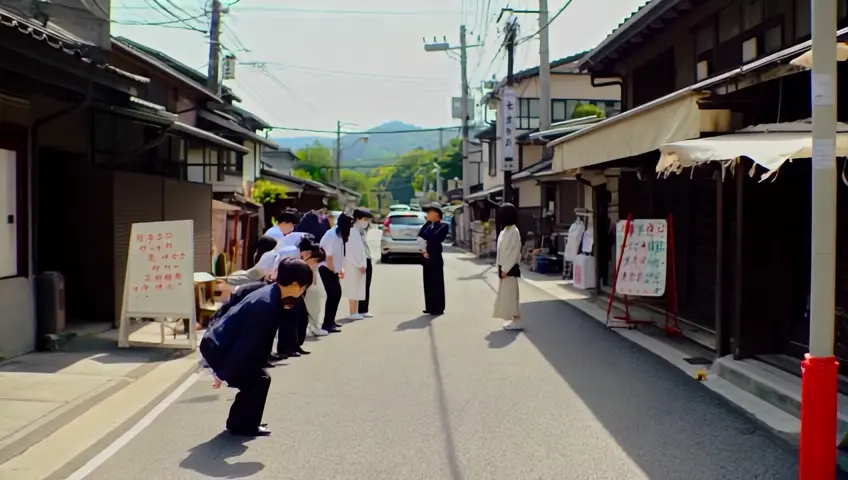Ronyruizsan72mo ago
Loading...

Prompt
"Una escena cotidiana en Atsugi mostrando a personas interactuando en un ambiente respetuoso de la distancia personal. En el primer plano, se ve a un grupo de amigos saludándose con una reverencia en lugar de un abrazo, y en el fondo, se observa a un par de personas en una conversación respetuosa, manteniendo una distancia cómoda. La imagen debe transmitir la importancia del respeto por el espacio personal y las normas sociales japonesas, con un enfoque en la cortesía y el comportamiento adecuado."
Seed2221649313
